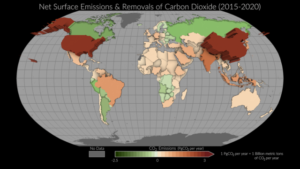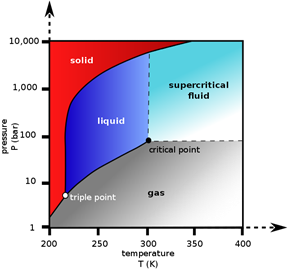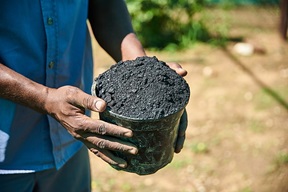Carbon dioxide is a powerful greenhouse gas. But we can put it to good use as well. Putting CO2 to good use may even reduce the burden of preventing its release to the atmosphere.

When it comes to useful applications, carbon dioxide is surprisingly versatile. Of course, we use it to carbonate beverages; and as a fire extinguisher. But we also use it in food processing, for pH reduction, as a chemical feedstock, and as dry ice. And these are just a few of its useful applications.
Green applications of carbon dioxide
We found much interesting information in an article in Biofuels Digest. Interestingly it particularly highlights carbon dioxide’s ‘green’ applications. It is used for enriching the atmosphere in greenhouses, in order to promote plant growth. For promoting algae growth, which can be looked upon as sequestration. And for fumigating grain. CO2 can be used for enhanced oil recovery and enhanced coal bed methane projects. Or for supercritical extraction of certain substances. And increasingly, CO2 is being used for the production of plastics, polymers and intermediate chemicals.
One of its applications is enhanced oil bed methane recovery (EOR). A well-proven technique, but sensitive to the oil price. Probably cost-effective at an oil price of at least $ 60 per barrel. The carbon dioxide will drive the methane from the seams; it also acts as a weak carbonic acid, dissolving some carbonates and reducing oil viscosity.

Supercritical CO2
Then, CO2 can be used as a solvent in dry cleaning. Here, it substitutes for perc (perchloroethylene), a move that brings health benefits because CO2 is essentially benign. Another application is the use of supercritical CO2 for extracting oils from plant sources. And we can enrich the atmosphere in greenhouses with CO2 – that will enhance plant growth. We can almost double the content of CO2 in the air, with appreciable impact on the growth. Likewise, we can promote algae growth by supplying CO2, promoting algae growth.
And then, CO2 is widely used for grain fumigation. In this application, it replaces rather nasty agents like carbon tetrachloride. The content of CO2 in the air is raised to as much as 60%. Exposure ranges from a day to sixty days, depending on grain temperature. This application doesn’t leave any residue.
Emission reduction
Carbon dioxide is also commonly used in pH reduction. For instance in the neutralisation of alkaline streams. Carbonates, the by-product of procedure, are harmless substances and can often be kept in solution. And CO2 is often used for blast cleaning, reducing solvent spillage.
And finally, there are many technologies to sequester CO2, i.e. take care of an uptake of CO2 in a process. Like photosynthesis (see above). Or fuel manufacturing. Suich technologies take CO2 off the table and reduce emissions to the atmosphere. Like by improving a carbonate structure in concrete by adding CO2 to the pre-cast mix. The author, Sam A. Rushing, president of Advanced Cryogenics Ltd., is confident that more green applications for CO2 uptake will be developed.
More options
In addition to these options mentioned in Biofuels Digest, there are many more techniques to sequester carbon dioxide. For instance, we can develop farming methods that will return biomass to the soil. Wikipedia mentions options like the following. We can, instead of laying land bare between crops, use cover crops. Like simple grass. We can concentrate livestock in small patches of land and rotate them. They then graze lightly but evenly. This will encourage roots to grow deeper into the soil. And we can restore degraded, marginal, and abandoned land. This will slow carbon release.
And then, farmers have also used mulching as a way to restore degraded land. Mulching covers the soil around plants with a mulch of wood chips or straw. Or we can leave crop residues in place to enter the soil as it decomposes. Or use compost for this purpose. Compost sequesters carbon in a stable (not easily accessed) form. This may increase soil carbon storage by 25-70%.

Biochar
And then, there is the miraculous product of biochar. Biochar is a carbon-rich product that resembles charcoal. It is produced through heating of biomass, in the absence of oxygen. The biomass being for instance manure, crop residues or wood. The biochar will sequester some 50% of the carbon in the biomass. Leaving it to oxidise very slowly, thereby acting as a carbon sink.
Finally we can store carbon in the soil by forestation. The amount of carbon sequestered in this way will depend on factors like forest age and type, amount of biodiversity and management practices. More biodiverse forests will in general sequester more carbon, thereby turning biodiversity to a tool in carbon farming.
Carbon monoxide
An innovative processing method (link in Dutch) has been developed by the Belgian company D-CRBN. They convert CO2 into CO, an important feedstock for the chemical industry. For scaling up their process, they were awarded recently € 2.5 million by a European agency. They will use this for developing a mobile demonstration unit for their plasma technology, with a capacity of converting annually 10,000 tonnes of CO2 to CO.
Plasma is a highly reactive aggregation state, that will for instance appear at a flash of lightning. By bringing CO2 in this condition, it can be split up to CO and oxygen. For half a year now, the company operates a pilot installation with a capacity of 1000 tonnes of CO2 in Blueapp, an open innovative hub of Antwerp University.
Scaling up
The company intends to use the granted subsidy for scaling up the technology from demonstration to commercial size. For up to now, the technology has been researched only at a small scale. An important strength is that CO2 doesn’t have to be pure – a purity level of 98.5%, usual in industrial CO2 capture now, will be sufficient. The company projects to introduce a commercial version on the market by the end of 2025, early 2026.
Yes, mankind releases too much carbon to the atmosphere. There are many ways, some yet unexplored, that can mitigate this release. Often by putting carbon dioxide to good use. This should be a factor in keeping the Earth’s carbon bookkeeping in check.
Interesting? Then also read:
Why didn’t decades of climate concern influence global emissions growth?
Carbon capture and utilization (CCU)
Towards net zero carbon emissions
